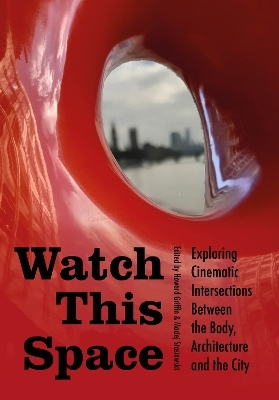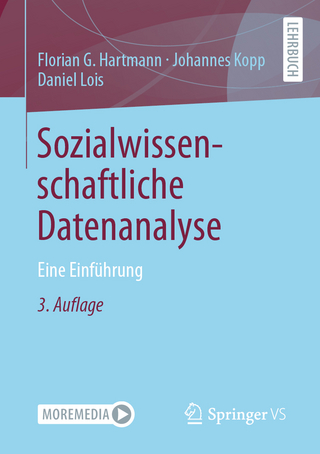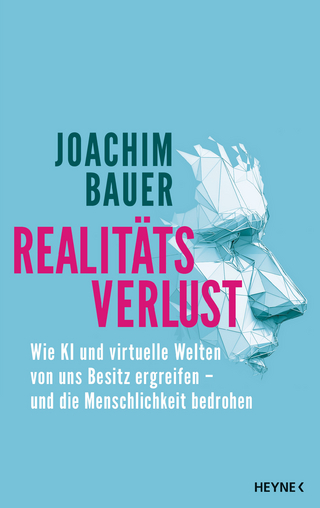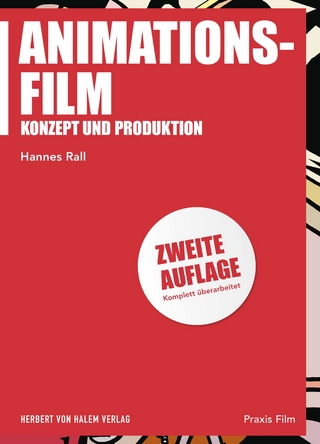
Watch This Space
Intellect Books (Verlag)
978-1-78938-980-7 (ISBN)
This book, and its individual essays, examine key emerging and evolving practices, theories and methodologies that operate in the blurred boundary between spatial design disciplines, such as architecture, interior and urban design, and film and moving image studies more broadly.
The collection is an exploration of the evolving interdisciplinary rhetoric connecting spatial design disciplines like architecture and urban design with film and moving image studies. It is premised on the argument that the understanding of ‘space’ in these areas continues to draw on each other’s fields of reference and that, in recent times, this has expanded further to the point in which it blurs with multiple other disciplines including media art, cultural studies and art practice, to name but three. The result of this evolving interdisciplinary understating of ‘space’ in design disciplines and moving image studies is an expanded field of haptic-visual practice and theory that can be investigated as both a material and an image-based construct.
It engages with this evolving set of ideas and underlines how each of its primary discipline areas now increasingly incorporate tools and methodologies from each other’s fields. For example, architects routinely engage with cinematic practice as a means of exploring space, cultural theorists inspect filmic space as a two-dimensional surrogate of the real, media artists incorporate knowledge of spatial design in video installations, and film makers create spaces on screen that are informed by architectural theory. This all follows what can be defined as a discursive turn in our view of spatial relationships across disciplines which, by definition, is complex, eclectic, occasionally contradictory and at times characterised by surprising confluences.
Conceived as a form of mapping of these confluences and contradictions, this book collects varied essays that, in their own unique ways, explore the diversity of how we today define, understand and engage with notions of the body in architectural-urban space. It does so through a triadic structure that progresses from haptic relationships of the body in architectural space, through film readings of represented space in mainstream cinema, and concludes with ‘experimental spatial’ projects inspired by film and the moving image. This tripartite structure specifically encourages a look across disciplines, broadening architectural, urbanist, media and cinematic concerns through insightful case studies that engage with their subjects by means of novel techniques, i.e. employing graphic software for an analysis of pre-digital films, deconstructing cinematography in modernist classics, or researching urban edgelands via collaging and montage etc.
Maciej Stasiowski is a graduate in film and media studies at the Institutue of AudioVisual Arts at the Jagiellonian University’s Faculty of Management and Social Communication, Cracow, Poland. He is the author of the book Atlas of all Things Inconstant: Strategies, structures and metafictional devices in the works of Peter Greenaway (Nomos, 2014), as well as of numerous academic articles on literary utopias, unbuildable architectural projects, and construction of filmic space. Howard Griffin is Director of the MA Architectural Visualisation programme at teh University of Kent, UK, a course which allows students to focus on the visual communication of architectural form, space and time. This work extends across a number of disciplines, including architecture, film, art, media, urban studies and photography.
Introduction: Of Stories and Settings – A Familiar Exchange
Maciej Stasiowski
1. Architecture and Complexity, New Heterogeneous Spaces and Old "New Media”
Irena Latek
2. The Spatial Imagery of Fractal Narratives in Marwan Hamed’s The Yacoubian Building
Taher Abdel-Ghani
3. Tracing Body and Space in Eisenstein’s Early Silent Films
Niek Turner
4. Body Talk: Between Architecture and Analogy in Michelangelo Antonioni’s The Passenger (1975)
J. English Cook
5. Are We Still Connected? Contemporary Chinese Minority Centred Films and the Depiction of Interdependent Relations Between Dwellers, Settlements, and Living Circumstances
Sicheng Liu
6. Screened and Reconstructed Urban Memory: Remembering and Forgetting İstanbul in Şahsiyet [Persona] Web TV Series
Ömer Can Bakan and Ahenk Yilmaz
7. Illuminating Spaces: Cinematic Travels and Emotional Inhabitation of Tokyo in Café Lumière
Simone Shu-Yeng Chung
8. Broadcasting the Visage of Urban Warfare: A case study of NaJa & deOstos' The Hanging Cemetery of Baghdad
Maciej Stasiowski
9. Mediatic Umbraculum: Architecture, Cinema, and Multimedia Systems
Eusebio Alonso-García, Sara Pérez-Barreiro, Iván Rincón-Borrego, Daniel Villalobos-Alonso, and José María Jové-Sandoval
10. Gordon Cullen’s Serial Vision: A Cinematic Urban Theory
Marco Spada and Carla Molinari
11. Architectural Research and Design in Hong Kong Through the Creative Use of Film
Esther Lorenz
Notes on Contributors
Index
| Erscheinungsdatum | 23.11.2024 |
|---|---|
| Reihe/Serie | Mediated Cities |
| Zusatzinfo | 82 Halftones, black and white |
| Sprache | englisch |
| Maße | 170 x 244 mm |
| Themenwelt | Kunst / Musik / Theater ► Film / TV |
| Sozialwissenschaften ► Kommunikation / Medien ► Medienwissenschaft | |
| Technik ► Architektur | |
| ISBN-10 | 1-78938-980-1 / 1789389801 |
| ISBN-13 | 978-1-78938-980-7 / 9781789389807 |
| Zustand | Neuware |
| Informationen gemäß Produktsicherheitsverordnung (GPSR) | |
| Haben Sie eine Frage zum Produkt? |
aus dem Bereich


